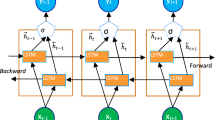Abstract
Accurate short-term prediction of power system load is of great importance to improvement of power system’s stability and electrical equipment’s safety, and a critical step for power load prediction is clustering of existing historical information of load. Since load itself is a time series data with high dimensionality, and meanwhile, load is influenced by meteorological factors and seasonal factors, as a result it’s difficult to establish simple linear relationships with the load and these factors, and consequently, the clustering quality obtained by traditional algorithms is low, which further affects quality of load prediction. Deep learning algorithm was introduced in this paper to construct a power load factor deep cluster neural network (PLDCNN) which consisted of multi-group neural network. Station operating data for consecutive 3 years were introduced in the simulation experiment. PLDCNN was compared with traditional clustering algorithms, and experiment indicated that PLDCNN could describe and classify power load information more accurately, and short-term load prediction of electric power system based on PLDCNN could also archive higher accuracy.



Similar content being viewed by others
References
Singh, D., & Singh, S. P. (2001). A self-selecting neural network for short-term load forecasting. Electric Power Components and Systems, 29(2), 117–130.
Ali, D., Yohanna, M., Puwu, M. I., & Garkida, B. M. (2016). Long-term load forecast modelling using a fuzzy logic approach. Pacific Science Review A: Natural Science and Engineering, 18(2), 123–127.
Chandrasekharan, B., & Colby, B. (2013). Medium-term electricity load forecasting and climate change in arid cities. Journal of Natural Resources Policy Research, 5(2–3), 163–181.
Singh, D., Singh, S. P., et al. (2002). Self organization and learning methods in short term electric load forecasting: A review. Electric Power Components and Systems, 30(10), 1075–1089.
Lee, W. J., & Hong, J. (2015). A hybrid dynamic and fuzzy time series model for mid-term power load forecasting. International Journal of Electrical Power & Energy Systems, 64(1), 1057–1062.
He, Y. X., Zhang, J. X., et al. (2015). Forecasting the urban power load in China based on the risk analysis of land-use change and load density. International Journal of Electrical Power & Energy Systems, 73(1), 71–79.
Jin, M., Zhou, X., et al. (2012). Short-term power load forecasting using grey correlation contest modeling. Expert Systems with Applications, 39(1), 773–779.
Zhao, H., Guo, S., et al. (2016). An optimized grey model for annual power load forecasting. Energy, 107(1), 272–286.
Raza, M. Q., Nadarajah, M., et al. (2017). An intelligent hybrid short-term load forecasting model for smart power grids. Sustainable Cities and Society, 31(1), 264–275.
Brodowski, S., Bielecki, A., et al. (2017). A hybrid system for forecasting 24-h power load profile for Polish electric grid. Applied Soft Computing, 58(1), 527–539.
Zjavka, L., Snášel, V., et al. (2016). Short-term power load forecasting with ordinary differential equation substitutions of polynomial networks. Electric Power Systems Research, 137(1), 113–123.
Hu, R., Wen, S., et al. (2017). A short-term power load forecasting model based on the generalized regression neural network with decreasing step fruit fly optimization algorithm. Neurocomputing, 221(1), 24–31.
He, Y., Xu, Q., et al. (2016). Short-term power load probability density forecasting based on quantile regression neural network and triangle kernel function. Energy, 114(1), 498–512.
He, Y., Liu, R., et al. (2017). Short-term power load probability density forecasting method using kernel-based support vector quantile regression and Copula theory. Applied Energy, 185(1), 254–266.
Zhang, X., Wang, J., et al. (2017). Short-term electric load forecasting based on singular spectrum analysis and support vector machine optimized by Cuckoo search algorithm. Electric Power Systems Research, 146(1), 270–285.
Li, Y., Wen, Z., Cao, Y., et al. (2017). A combined forecasting approach with model self-adjustment for renewable generations and energy loads in smart community. Energy, 129(1), 216–227.
Hinton, G. E., Osindero, S., et al. (2006). A fast learning algorithm for deep belief nets. Neural Computing, 18(1), 1527–1554.
Wang, Y. Q., Xie, Z. G., et al. (2016). An efficient and effective convolutional auto-encoder extreme learning machine network for 3d feature learning. Neurocomputing, 174(1), 988–998.
Xiong, P., Wang, H. R., et al. (2016). ECG signal enhancement based on improved denoising auto-encoder. Engineering Applications of Artificial Intelligence, 52(1), 194–202.
Acknowledgements
This research was supported by the Foundation of Jilin Province Education Department (JJKH20170516KJ).
Author information
Authors and Affiliations
Corresponding author
Rights and permissions
About this article
Cite this article
Sun, H., Pan, X. & Meng, C. A Short-Term Power Load Prediction Algorithm of Based on Power Load Factor Deep Cluster Neural Network. Wireless Pers Commun 102, 1073–1084 (2018). https://doi.org/10.1007/s11277-017-5140-0
Published:
Issue Date:
DOI: https://doi.org/10.1007/s11277-017-5140-0




